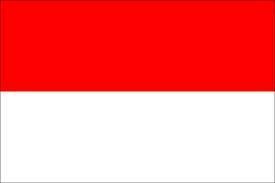
Restrictions at Indonesia’s main seaport in Jakarta are causing significant problems for the country’s fresh produce importers.
As of 19 June only fresh produce from nations with mutual recognition agreements (MRA) has been allowed to enter the country through Jakarta’s main port of Tanjung Priok. Product from countries without an MRA must enter through either the Port of Surabaya, the Port of Medan, the Port of Makassar or Jakarta International Airport.
PT Indofresh director Agus Ang said that the closure of the Jakarta port to most fruit exporting countries has had a significant impact on trade. “It is a real headache”, he told Asiafruit. “We now have 40 containers of fruit at the Surabaya port but no trucks to transport them.'
According to Halim Ngalimin, import manager of PT Segar Manis Mata, the fruit import business has become more complicated and some companies now have to rent small feeder vessels in Surabaya or find trucks and send the fruit overland to Jakarta, which is a two to three day journey. “This has increased the costs and impacts on fruit quality,” said Ngalimin.
Ang added that the price of fresh fruit to the consumers in Jakarta has become more expensive. “We have increased transport costs and wharf charges at Surabaya because there are no trucks to move the containers,” he said.
Meanwhile, the fruit prices in Surabaya – Indonesia’s second-largest city - have dropped as many importers have had to sell their shipments there or in Bali as there are limited transport options. “The Surabaya market is bad for business which impacts on the local fruit growers,” said Ang.
PT Yudha Mustika director and president Joseph Joemono said that Chinese fruit was likely to be allowed to ship direct into Jakarta’s Tanjung Priok port in the coming months once it is granted an MRA. At the moment all Chinese fruit is shipped to the Surabaya port and is trucked to Jakarta – a journey by road of up to 3 days at a cost of almost US$2,000 per container.
Mr Ngalimin said that imports have slowed in particular from China as a result of this regulation.
For more on this story see the Septmember edition ofAsiafruit






No comments yet